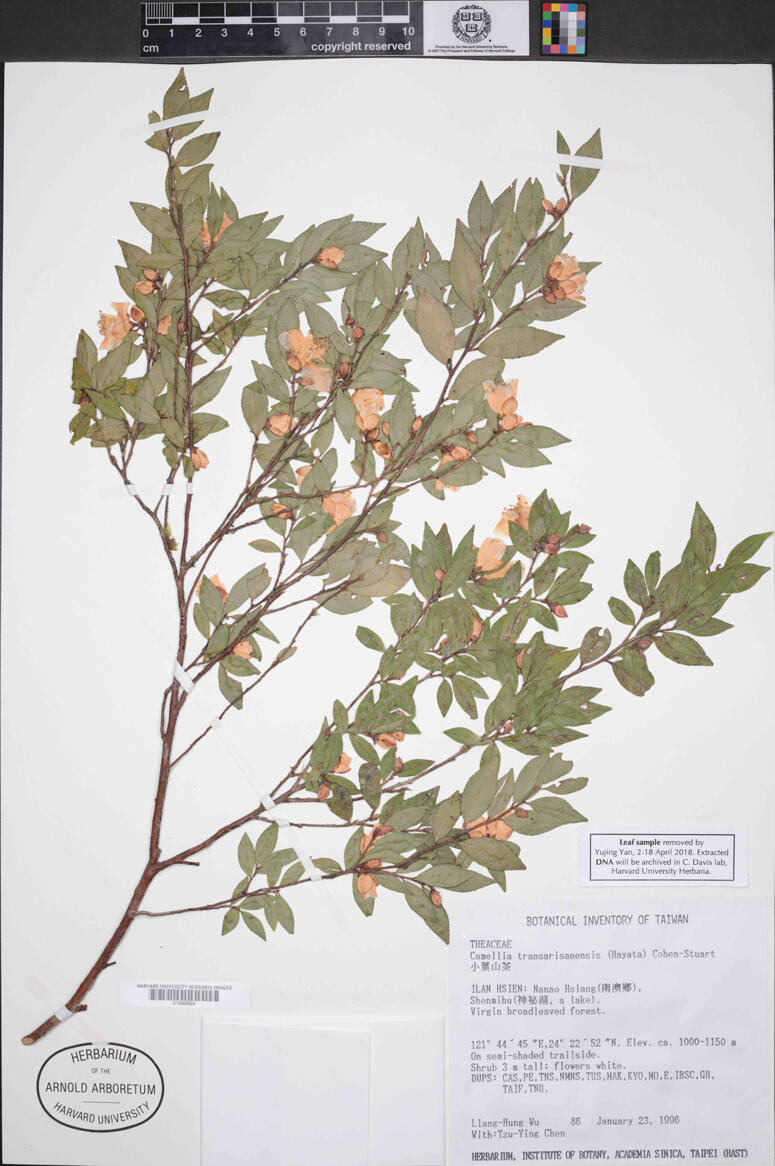
Dr. Yujing Yan is a Research Fellow at the Harvard University Herbaria. Yujing obtained her PhD in 2020 in Biodiversity at the University of Copenhagen, Denmark. She has always been fascinated by the rich diversity of life. She uses a variety of methods from ecology, biogeography, and evolutionary biology to study how diversity patterns have evolved at both taxonomic and geographic levels and how rapid environmental change would impact such patterns in the near future. When not working, she enjoys visiting new places, hiking, cooking, photographing, and reading novels.
When did you first became interested in botany?
My mom grew up in the countryside and she has a strong affinity for nature though living in Beijing. She always took me to botanical gardens during weekends and taught me how to grow plants and identify common wildflowers when I was a kid. I still remember the excitement of harvesting fruits from Luffa cylindrica that I grew from seeds for the first time when I was six. I became interested in botany since then.
Where did you gain your educational foundation?
I did my undergraduate and master’s studies at Peking University in China, majoring in ecology. The subject was derived from geography in that department. We have field courses almost every year. I also joined several field trips around China. I learned to identify many plants in their natural habitat and gained knowledge about physical geography, geomorphology, vegetation compositions, etc. from those experiences. Then I pursued a PhD degree at the University of Copenhagen in Denmark. I belonged to the Center for Macroecology, Evolution and Climate, which used to be part of the Natural History Museum of Denmark, known for its rich collections of bird specimens. That was the first time I got to know research using museum collections, though in birds and mammals. When I visited HUH during my PhD, I took courses about plant systematics and molecular evolution and tried to learn as much as I could about the botanical collections and museum practice.
Did you have a mentor(s)?
I am very lucky to have had the chance to study and work in different countries and learn from people with diverse backgrounds. Many of them act as mentors for me. They not only taught me knowledge, but also the way to work and collaborate. Several people were and still are very helpful: Charles Davis, David Boufford, Liming Cai, Michael Borregaard, and Zhiyao Tang.
When did you first become involved with the HUH?
I first came to the HUH in 2018 as a visiting student in the (Charles) Davis lab. It was during that visit that I first used herbarium specimens in research. Although I visited the herbarium of the Institute of Botany, Chinese Academy of Sciences in Beijing when I was in college, I always viewed the herbarium as a place specifically for taxonomists before I became involved with the HUH.
What was your most exciting discovery so far?
So far, my most exciting discovery was about the biogeography of the tea family (Theaceae), a topic I pursued during my PhD. Combing fossil evidence and molecular phylogeny, my collaborators and I found that the disjunction distribution of the family in Eastern Asia and America might be the result of multiple range expansions and contractions in the Northern Hemisphere following climate change during geological times. The current distribution pattern could be the remnant of a larger continuous distribution associated with the so-called “boreotropical forest” that has been hypothesized to occupy most of the northern latitudes in the early Cenozoic. The result highlights the complexity of the biogeographic history of the family and showcases the necessity of integrating fossils into phylogeny-based biogeographic study. [See this publication for more information: Yan, Y., Davis, C., Wang, Z.-H., Dimitrov, D., Rahbek, C., & Borregaard., M (2021). Uncovering the origin of amphiPacific disjunct distributions using a high-resolution phylogeny and fossils of Theaceae. Systematic Biology. https://doi.org/10.1093/sysbio/syab042]
Do you have a specimen that is the most cherished?
It is hard to choose a favorite, but many specimens of Camellia still preserve the greenness of leaves and look like art pieces.
What do you like most about your job?
As a researcher, it is challenging to choose specific research questions and to deal with uncertainties or possible failures along the way. However, I enjoy the freedom to design my own project, step into the dark of unknowns and “explore nature's inexhaustible mosiac piece by piece”. The nature of my research also resembles that of historians, in that we try to better guide future activities by reconstructing and learning from the past (ideally). I have been attracted by the stories and experiences of several naturalists and biologists in my childhood. First Jane Goodall, then Jean-Henri Casimir Fabre, and Alexander von Humboldt. I always dreamed of leading a life full of adventures and discoveries. This job exactly corresponds to what I imagined before. Besides, I am thrilled to be working in an environment where I have access to invaluable historical collections. I was excited to see numerous specimens collected by pioneers of modern Chinese botany, such as Dr. Hu Hsien-Hsu, almost a hundred years ago. It is even more exciting to be able to mine additional information from those historical collections using cutting-edge technologies like next-generation sequencing.
What would you like the next generation to seek out?
I would like the next generation to continue exploring nature and documenting biodiversity by collecting specimens in the field if they have the opportunity. It is necessary to see species in their natural habitat rather than to play with data on computers or to study the specimens in the herbarium solely.
Is there anything else you'd like to share?
If of interest, please see my personal website (https://yanyujing.info/) for more information about my projects and publications.

Camellia transarisanensis (Hayata) Cohen-Stuart, https://kiki.huh.harvard.edu/databases/specimen_search.php?barcode=01689889